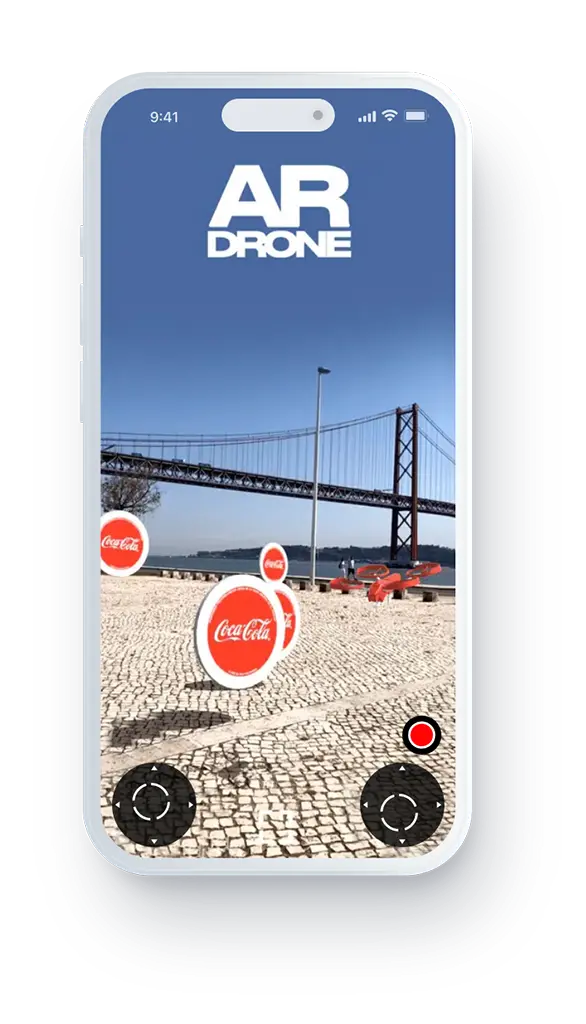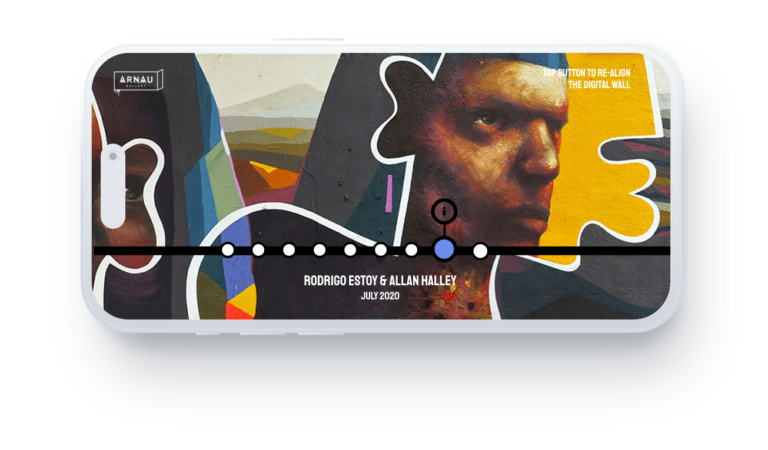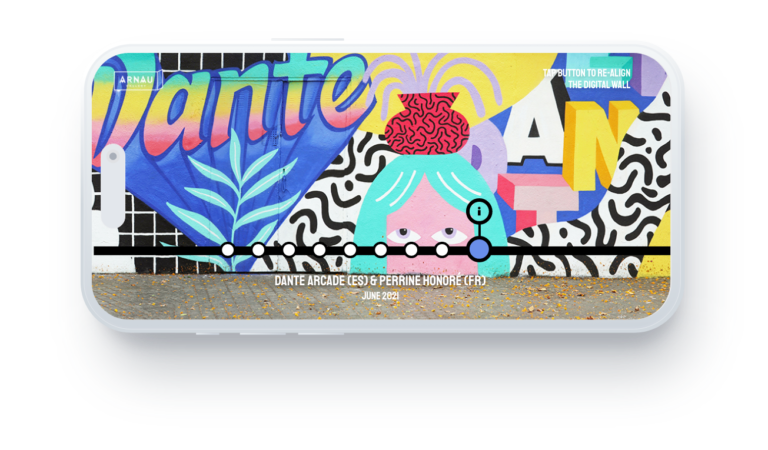Augmented Reality

Do you remember the song by Soul 2 Soul, “Back to life”? Can Augmented Reality bring us back to life, back to reality? How can technology reconnect us with life as we knew it before social media – a time when we were present to our surroundings rather than head down in our phones, subject to constant distraction?
To set the stage, let’s begin with a brief definition of “Augmented Reality” (usually referenced simply as AR):
“…a technology that superimposes a computer-generated image on a user’s view of the real world, thus providing a composite view.”
Definition from Oxford Dictionary
When I moved to Barcelona in 2009 my first impression was the richness of the urban arts culture in the city. After 10 years working in digital media as a motion graphics designer, digital artist, 3D designer and teacher, I was also experimenting with Augmented Reality. Around that time it had become available to independent developers through platforms such as Vuforia and game development software like Unity3D.
Also around this time the mobile game, Pokemon Go became a massive hit. We still feel the impact of that today. In its most basic form, the player sees a map of their surroundings and has to go to physical locations to “activate” a 3D experience that was part of their surroundings looking through the mobile device’s camera.
The idea of getting people to stop staring into their phone in isolation, and to get them out in their city, where they physically interact with the other billion Pokemon Go players who were searching for the treasures in the same park, was a new motivation. Getting people to interact with their surroundings, their community through this exciting, unstoppable technology felt really promising.
Scientific papers on the effect of this game on human behaviour are compelling:
“Our findings indicate that the surveyed players changed their behaviors while or after playing Pokémon GO. The respondents reported being more social, expressed more positive emotions, found more meaningfulness in their routines, and had increased motivation to explore their surroundings.”
https://www.ncbi.nlm.nih.gov/pmc/articles/PMC7281148/
Living in Barcelona, seeing art mostly on dedicated walls and on doors throughout the city I thought of using these surfaces as AR image markers* to add a new digital layer on top of the city, for the creation of public art expanding from classic mediums (paint, stencils, spray cans, stickers) to also include animated 3D graphics, video, and even spatial audio. Paired with the nature of projects I was involved in that were projection mappings; the architecture is the canvas. This is when the first experiments started.


Arnau Gallery app in use
A solution is born
Although the surfaces worked very well as image markers, I soon found a limitation: the walls and doors were updated frequently, losing the ability to recognise the images needed to display the digital content. So from there I conducted research on the algorithms of image marker technology.
I tested and built a database of images of old Roman walls in the inner city, paired with GPS coordinates, and the first iteration of XR Canvas was born. The initial content is still a light version of the intended complexity, but the platform is there, ready to be filled with beautiful, interesting, and meaningful content.
Throughout the years, I continued building the database and updating the system as the technology advanced, while working on a wide range of other immersive design projects: projection mapping, virtual reality experiences, interactive installations for museums and cultural organisations. All this time, I continued developing and solidifying the XR Canvas framework while gaining a deeper knowledge of AR and VR.
In recent years, there has been a lot of prototyping and waiting for technology to overcome certain limitations. The next few years appear to see AR and VR grow from nascent to more broadly sought-after technologies, utilised for a broad array of purposes and applications. The global extended reality (XR) market reached a value of US$ 42.86 Billion in 2021. Looking forward, IMARC Group expects the market to reach a value of US$ 465.26 Billion by 2027 exhibiting a CAGR of 46.20% between 2022 and 2027.
Most recently, we developed a spin-off of XR Canvas for the AR-DE festival in Barcelona; a circuit of galleries, museums and design stores throughout the Poblenou district that opened their doors for a weekend long festival. The app we developed contained a map with all the participants’ locations (and the user’s), and in each location a unique branded augmented reality triggered by stickers we designed for each location. It added an extra layer of spatial experience and as proof of concept it succeeded; the visitors were engaged, and the augmented reality content was well received.
Another recent project was our collaboration with Street Art Barcelona, creating the first version of the Arnau Gallery app. An Augmented Reality Experience that enables its users to travel through the history of the Urban Art Venue and see the previous murals created for the Arnau Gallery wall on Avenida Parallel in Barcelona, Spain.
Gaining traction and uptake through strong content and a viable business model is the next step. What we can already be certain of is the impact that AR can have in added engagement with our surroundings. It can move us out of our bubbles, into public spaces. It can make us more present to the environment around us. And in a time of increased isolation, that is no small feat.